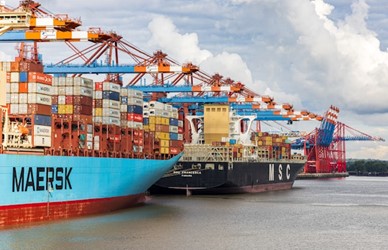Several months into the new year, the global economy is poised at a critical juncture, shaped by a myriad of factors ranging from geopolitical tensions to technological advancements. In this article, Chris Nicak delves into the key economic indicators and trends that are likely to define the trajectory of global markets in 2024, providing insights and analysis to help investors, businesses, and policymakers navigate the turbulent landscape.

GDP Growth Projections
One of the most closely watched economic indicators, Gross Domestic Product (GDP) growth, provides a measure of a country’s economic performance. In 2024, economists anticipate a mixed outlook for global GDP growth, with emerging markets such as India and China expected to lead the way with robust expansion fueled by strong domestic demand and infrastructure investment.
However, developed economies, including the United States and European Union, may face headwinds due to lingering effects of the COVID-19 pandemic, supply chain disruptions, and geopolitical uncertainties.
Inflation Rates
Inflation, the rate at which the general level of prices for goods and services rises, is another critical factor influencing economic stability and consumer purchasing power. In 2024, economists will closely monitor these rates amid concerns about rising commodity prices, supply chain bottlenecks, and accommodative monetary policies. Central banks, including the Federal Reserve and European Central Bank, may face the delicate task of balancing inflationary pressures with the need to support economic recovery, potentially leading to adjustments in interest rates and monetary policy measures.
Employment Patterns
Employment dynamics play a pivotal role in shaping economic trends and consumer confidence. This year, labor markets are expected to continue their recovery from the pandemic-induced downturn, with job creation and workforce participation rates varying across regions and industries.

Technological advancements, including automation and artificial intelligence, may reshape the nature of work, leading to increased demand for skilled labor and digital literacy. Additionally, policymakers will grapple with challenges related to labor market disparities, wage growth, and workforce reskilling initiatives to foster inclusive economic growth.
Global Trade and Supply Chains
The intricately interconnected nature of global trade and supply chains has come under scrutiny in recent years, highlighted by disruptions caused by the COVID-19 pandemic, trade tensions, and geopolitical conflicts.
In 2024, businesses will continue to reassess their supply chain strategies, seeking to enhance resilience, diversify sourcing, and mitigate risks associated with geopolitical uncertainties and natural disasters. Moreover, technological innovations, such as blockchain and digital platforms, may play a pivotal role in streamlining supply chain operations and enhancing transparency and traceability.

Sustainable Investing
The growing emphasis on sustainability factors is reshaping investment strategies and corporate decision-making worldwide. This year, sustainable investing is expected to gain further momentum, driven by increasing awareness of climate change, social inequality, and corporate responsibility.
Investors are increasingly scrutinizing companies’ ESG performance and disclosures, influencing capital allocation decisions and shaping corporate practices. Moreover, regulatory initiatives and investor activism may accelerate the adoption of sustainable business practices and accountability standards across industries.
Conclusion
In closing, 2024 promises to be a pivotal year for the global economy, characterized by a complex interplay of economic, geopolitical, and societal forces. As stakeholders navigate the uncertainties and opportunities of the year ahead, it is imperative to remain vigilant, adaptable, and informed about key economic indicators and trends shaping global markets. By staying abreast of developments in GDP growth, inflation rates, employment patterns, global trade, and sustainable investing, businesses, investors, and policymakers can position themselves strategically to seize opportunities and mitigate risks in an ever-changing economic landscape.



